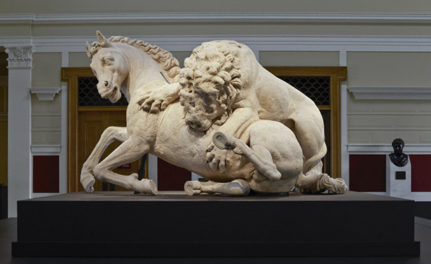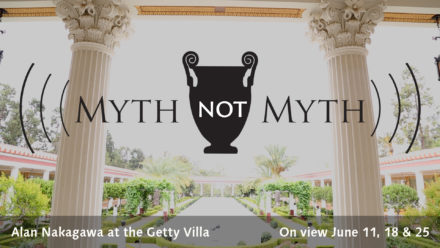L.A. theater ensemble Poor Dog Group is unleashing Satyr Atlas, a re-imagining of ancient Greek satyr plays, at the Getty Villa this weekend. What are satyr plays, you ask? Neither tragedy nor comedy, but a dramatic universe of their own starring the wild, badly behaved companions of Dionysos, these plays have been rarely considered by contemporary theater artists.
Only one complete satyr play survives (Euripides’ The Cyclops), and sizable fragments of a second (Sophocles’ The Trackers)—both of which were featured in the recent exhibition The Art of Ancient Greek Theater. We possess hundreds of fragments from other satyr plays, but they represent something of a giant jigsaw puzzle, with most of the pieces still missing. Even the most learned scholars of the form fail to agree on important points regarding the performance and status of these plays in ancient Greece.
We were delighted, therefore, to find that Poor Dog Group—one of the most innovative young theater ensembles in California—had developed a passionate interest in satyrs, both onstage and off. One might even say an obsession. After six months of intensive research and rehearsal, their new work Satyr Atlas is the result, and Getty audiences will be the first to see this work-in-progress.
Their Satyr Atlas is as creative as it is minimalist. Supported by a gorgeously designed stage and sound environment, the performers are free to channel their inner half-man, half-horse. At the same time, the group depends primarily on the human body and voice to express the essence of the classical story. In this video, go behind the scenes as the group rehearses the work and hear from director Jesse Bonnell on the creative process.
(video by Steve Saldivar)




Comments on this post are now closed.